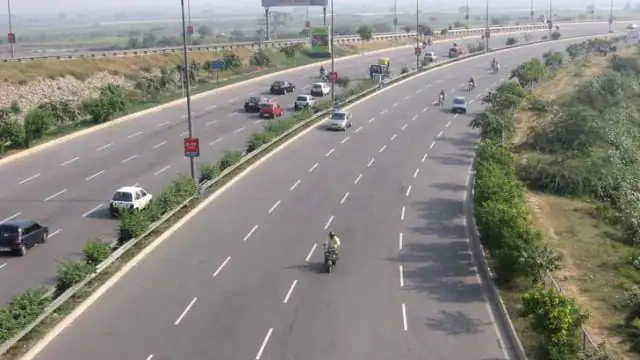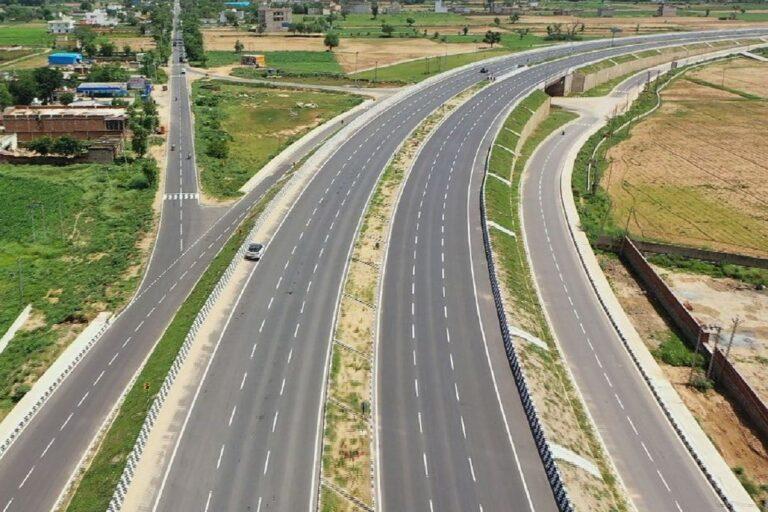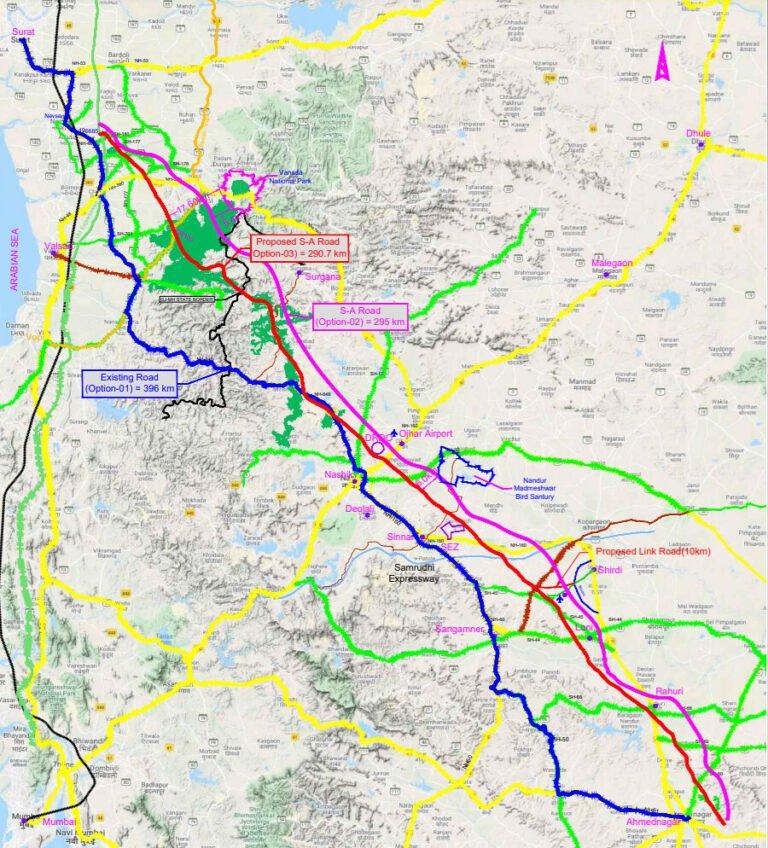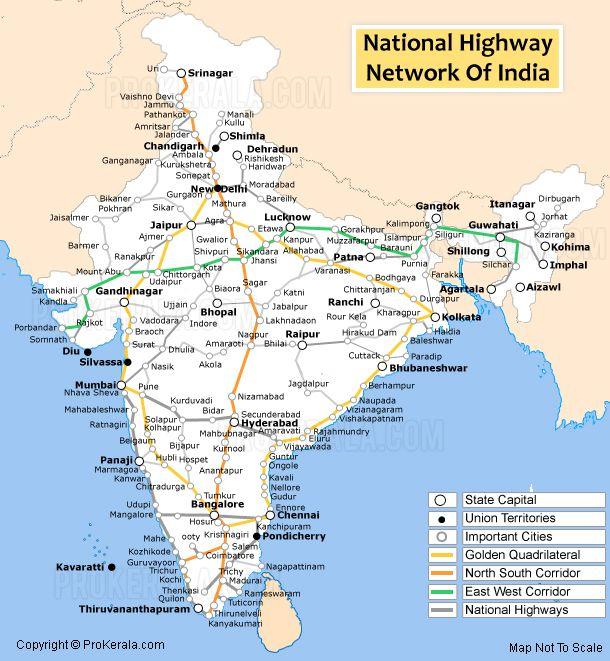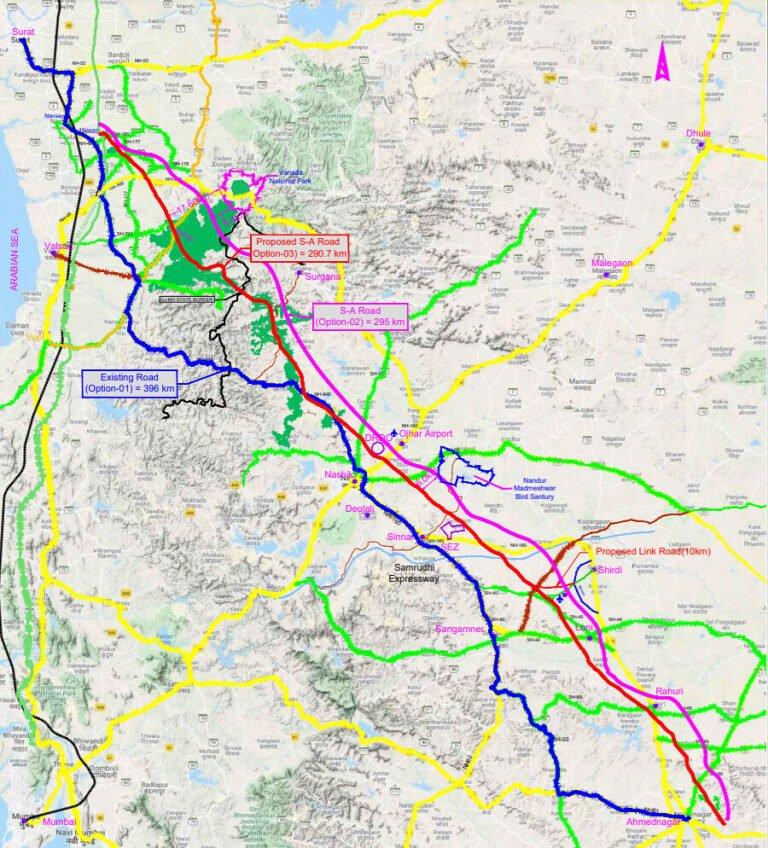
The Solapur-Chennai Economic Corridor (SCEC) is a significant infrastructure project under the larger Bharatmala Pariyojana scheme, aimed at improving India’s transportation network. This corridor, part of the larger Surat-Chennai Expressway project, is designed to enhance connectivity across southern and central India, linking key industrial hubs, major cities, and ports.
Overview of the Solapur-Chennai Economic Corridor
The Solapur-Chennai Economic Corridor spans approximately 707 km, starting from Solapur in Maharashtra and terminating in Chennai, Tamil Nadu. The project includes both greenfield (new) and brownfield (upgraded existing roads) segments. It passes through five states: Maharashtra, Karnataka, Telangana, Andhra Pradesh, and Tamil Nadu, making it a multi-state project crucial for regional economic development. The entire project is projected to cost around ₹15,000 crores, with a mix of 6-lane and 4-lane sections to facilitate efficient movement of goods and passengers.
Project Highlights
- Length: 707 km
- States Covered: Maharashtra, Karnataka, Telangana, Andhra Pradesh, Tamil Nadu
- Cost Estimate: ₹15,000 crores
- Status: Bidding, land acquisition, and some sections under construction
- Completion Date: Expected by December 2026, with some sections to be completed earlier.
Key Objectives of the Corridor
- Economic Growth: The SCEC will significantly boost economic activities by improving connectivity between key industrial regions. With access to major cities like Chennai and Solapur, this corridor will serve as a catalyst for trade and industrial growth in the region.
- Enhanced Freight Movement: The corridor is designed to handle a large volume of freight traffic, reducing transit times and improving supply chain efficiency. This is particularly crucial for industries located in the south and central parts of India.
- Job Creation and Local Development: As the construction progresses, job opportunities will increase across various sectors such as construction, logistics, and infrastructure. This corridor will also promote local development by enhancing access to remote regions.
Route and Key Sections
- Maharashtra: The corridor starts at Solapur, where it merges with the Surat-Chennai Expressway. The 230 km stretch from Akkalkot to Kurnool is primarily greenfield, while the rest is brownfield.
- Karnataka and Telangana: Passing through regions like Raichur and Yadgir, this section is crucial for linking key industrial hubs. Ongoing construction in these regions is expected to meet the 2025 completion target.
- Andhra Pradesh: Covering important sections near Kurnool, the project ensures better access to Andhra Pradesh’s industrial zones.
- Tamil Nadu: The corridor terminates in Chennai, one of India’s busiest ports and industrial zones, making it a vital link for export-oriented industries.
Strategic Importance of the Corridor
- Port Connectivity: By linking central India to Chennai’s seaport, the corridor will improve export capabilities for manufacturing hubs in states like Maharashtra and Telangana.
- Reduction in Transit Time: The expressway will cut travel times between Solapur and Chennai significantly, enhancing the movement of goods and reducing logistics costs.
- Part of a Larger Network: The Solapur-Chennai Corridor is part of the larger Surat-Chennai Economic Corridor, a 1,271 km expressway that further enhances India’s national transportation grid. This broader network will facilitate the movement of goods between the industrial regions of Gujarat, Maharashtra, and Tamil Nadu.
Comparison with Other Economic Corridors
| Corridor | Length (km) | States Covered | Estimated Cost (₹ Crores) | Status |
|---|---|---|---|---|
| Solapur-Chennai Economic Corridor | 707 | Maharashtra, Karnataka, Telangana, Andhra Pradesh, Tamil Nadu | 15,000 | Under construction |
| Surat-Solapur Corridor | 513.25 | Gujarat, Maharashtra | 30,000 | Partially constructed |
| Mumbai-Delhi Expressway | 1,350 | Maharashtra, Madhya Pradesh, Rajasthan, Haryana, Delhi | 1,00,000 | Near completion |
| Amritsar-Jamnagar Economic Corridor | 1,316 | Punjab, Haryana, Rajasthan, Gujarat | 26,000 | Under construction |
This comparison highlights the strategic importance of the Solapur-Chennai Corridor in relation to other major expressways being developed in India.
Challenges and Opportunities
While the project is expected to bring significant economic benefits, there are some challenges:
- Land Acquisition: Land acquisition has been a slow process, especially in states like Maharashtra and Karnataka. However, the government is working to expedite this through policy interventions.
- Environmental Concerns: As with any large infrastructure project, the SCEC faces scrutiny regarding its environmental impact. Careful planning is necessary to minimize deforestation and disruption to local ecosystems.
- Economic Opportunities: The economic opportunities presented by this corridor, especially in logistics, warehousing, and related industries, are immense. Improved connectivity will lead to the development of industrial clusters along the corridor route, benefiting local businesses.
FAQs
1. What is the purpose of the Solapur-Chennai Economic Corridor?
The primary objective is to improve connectivity between Solapur and Chennai, enhancing trade, reducing transportation time, and boosting industrial growth in the region.
2. When will the project be completed?
The entire corridor is expected to be completed by December 2026, with some sections finishing earlier by December 2025.
3. How will the corridor benefit industries?
The corridor will significantly reduce travel time, lower logistics costs, and improve access to key industrial zones and ports, particularly benefiting manufacturing and export-oriented industries.
4. Which states will benefit the most from the corridor?
Maharashtra, Telangana, Karnataka, Andhra Pradesh, and Tamil Nadu are the states that will see the most significant economic benefits due to enhanced connectivity and trade routes.
Conclusion
The Solapur-Chennai Economic Corridor is a transformative project with the potential to reshape India’s infrastructure landscape. By linking central and southern India through an access-controlled highway, this project will boost economic activities, create jobs, and reduce travel times, making it a cornerstone in India’s journey toward modernizing its transportation network.

